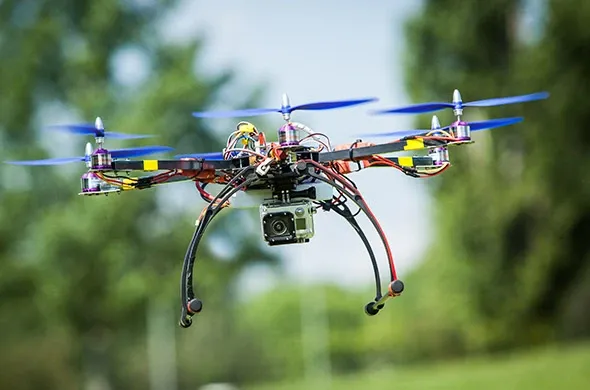Business Users and Developers Are the Main Opportunities for AI PCs
AI is coming to the PC, but Apple and NVIDIA already have a lock on creative and gaming users, says a new Omdia report.

The global market in drone-powered solutions for the power and utilities industries is worth as much as US$9.46 billion a year, PwC estimates in a new report. The study illustrates how creative uses of unmanned aerial vehicles are disrupting the way companies build, operate and maintain their networks.
A flamethrowing drone used to clear rubbish from power lines is one of the more dramatic examples of innovative uses for unmanned aerial vehicles found in the report from PwC’s global Drone Powered Solutions team. More prosaic applications range from geospatial surveys in pre-investment planning, through monitoring of the construction process and managing assets, to proactively dealing with threats such as overgrown vegetation.
Global power transmission networks are forecast to increase to 6.8 million circuit kilometres in 2020, up 15% from the 2016 level, as energy production is reshaped by the rise of renewables, and demand grows in emerging markets such as China and India. Regulators are increasingly concerned about reliability, offering incentives to reduce outages and penalties for downtime. Every year the sector loses US$169 billion due to energy network failures and forced shutdowns.
“The power and utilities sector faces numerous new challenges as it stands on the threshold of a digital revolution,“ said Drone Powered Solutions Partner MichaÅ‚ Mazur. “Pressure to shift to renewables from fossil fuels, while reducing prices, is forcing companies to look for new ways to stay profitable. As companies reinvent their business models, drones are helping increase the reliability of energy production, transmission and distribution.“
The latest report in PwC’s ‘Clarity from above’ series includes stories of how creative utilities managers around the world are turning to drones to solve some of the industry’s most intractable problems, increasing both reliability and worker safety. For example, in most countries monitoring vegetation growth and trimming trees near power lines is the single biggest maintenance cost for power companies. Drones can make the trimming process more efficient, as well as providing data that helps predict and avoid damage from falling trees.
Water utilities are also finding that drones can be more useful than satellites in the process of monitoring water quality. PwC’s Geospatial.App software allows the integration, presentation and management of mapping data gathered by drones equipped with visual, infrared and other cameras, which is useful in areas including monitoring the process of infrastructure construction, tracking the need for maintenance and assessing damage after natural or man-made disasters.